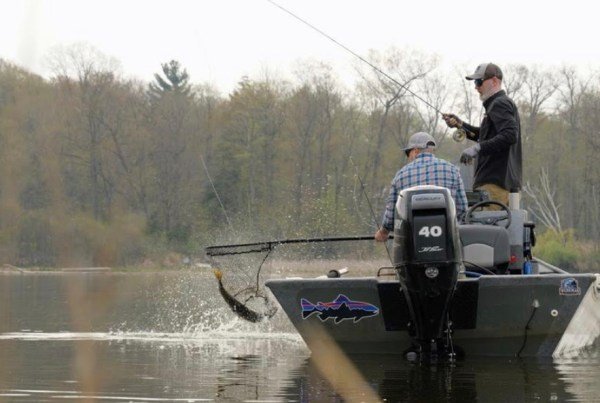Conservation groups urge stronger protections against ballast water invaders
Contact: Marc Smith, National Wildlife Federation ([email protected])
ANN ARBOR, Mich (Dec. 1, 2020) - A new Environmental Protection Agency (EPA) rule will not protect the Great Lakes from the spread and introduction of invasive species from ballast water, says a coalition of conservation organizations in the Great Lakes.
NWF has joined with 39 conservation and hunting and fishing organizations, which all share an interest in ensuring that invasive species are not newly introduced into or further spread throughout the Great Lakes and St. Lawrence River, in submitting comments to the EPA.
In October 2020, the U.S Environmental Protection Agency proposed new ballast water standards. EPA denied multiple requests by stakeholders and states to extend the comment period. In comments to the EPA last week, the conservation groups said the proposed regulations fail to provide the strong safeguards needed to address the threat that invasive species pose to the Great lakes.
“Aquatic invasive species are the biggest threat facing the Great Lakes and St. Lawrence River biodiversity today,” the groups wrote. “A strong federal program to prevent the introduction and spread of invasive species into the U.S. and Great Lakes is urgently needed.”
Scientists, conservation groups and outdoor enthusiasts have long called for strong regulations over how commercial ships operate in the public waterways. One big problem is ballast water, which helps provide stability in rough sea conditions and when loading and unloading cargo. When ships discharge ballast water, they release water and any organisms present in that water.
Scientists, conservation groups and outdoor enthusiasts have long called for strong protections to prevent commercial ships from discharging biological pollution into the Great Lakes and other U.S. waters. Non-native species such as zebra and quagga mussels have infiltrated U.S. waters, outcompeted native species for habitat, and caused tremendous environmental and economic harm.
Despite the immense damage non-native species cause – one estimate pegs the cost of ballast water invaders at more than $200 million annually – the EPA proposal fails to adequately address the problem.
One flaw in the EPA proposal is an exemption for “lakers” or large ships that only operate in the Great Lakes but play a major in role in spreading invasive species from one waterway to another.
Aquatic invasive species or “AIS” are a persistent problem in both coastal and inland waters, costing the U.S. billions of dollars annually. These invasive species – such as zebra and quagga mussels, among others – have entered the Great Lakes in the ballast water discharged from ocean-going ships. AIS have devastated local aquatic populations by consuming large quantities of phytoplankton and algae, stealing nutrition from smaller fish. This, in turn, reduces the food available for prized walleye, lake trout or salmon, interfering with anglers who enjoy fishing opportunities on the Great Lakes and inland waters across the country.
In addition to hurting outdoor recreation, invasive species can damage pipes, pumping stations, reservoirs and other public and private infrastructure, costing the Great Lakes region more than $200 million each year in damages and control costs.
“The Great Lakes are a multi-faceted ecosystem, one that includes commercial shipping and other job-creating economic activity,” the groups wrote. “Protecting our precious waters from invasive species, however, is a long-term investment that requires that all ships that operate in the Great Lakes place stronger controls to stop new introductions and prevent further spread of invasive species.”



